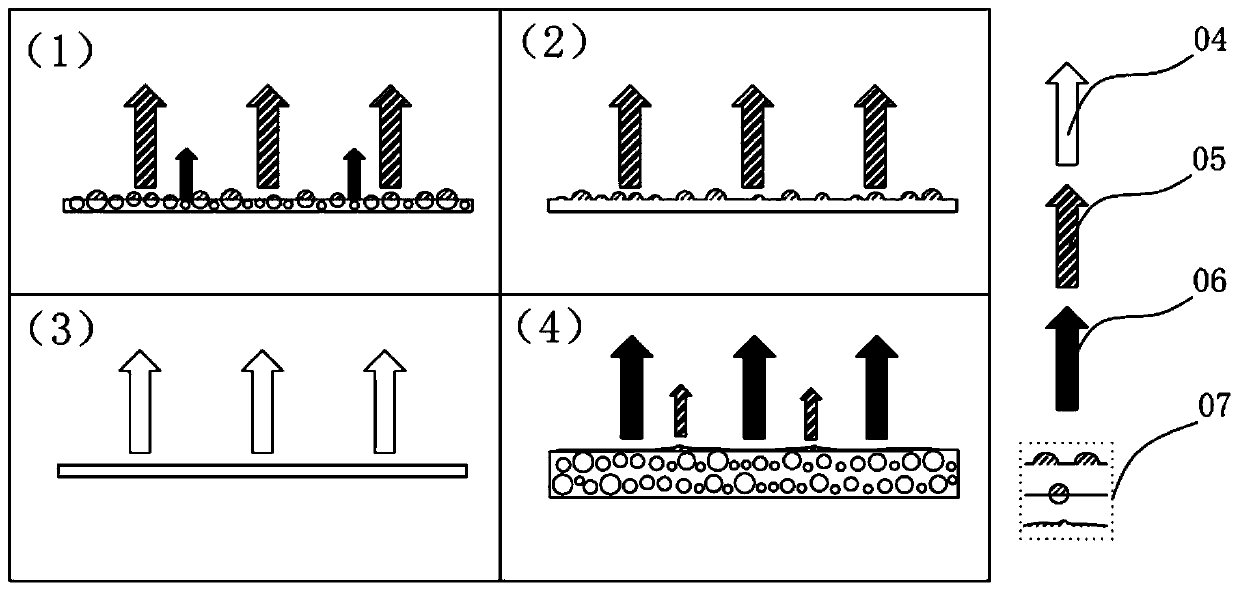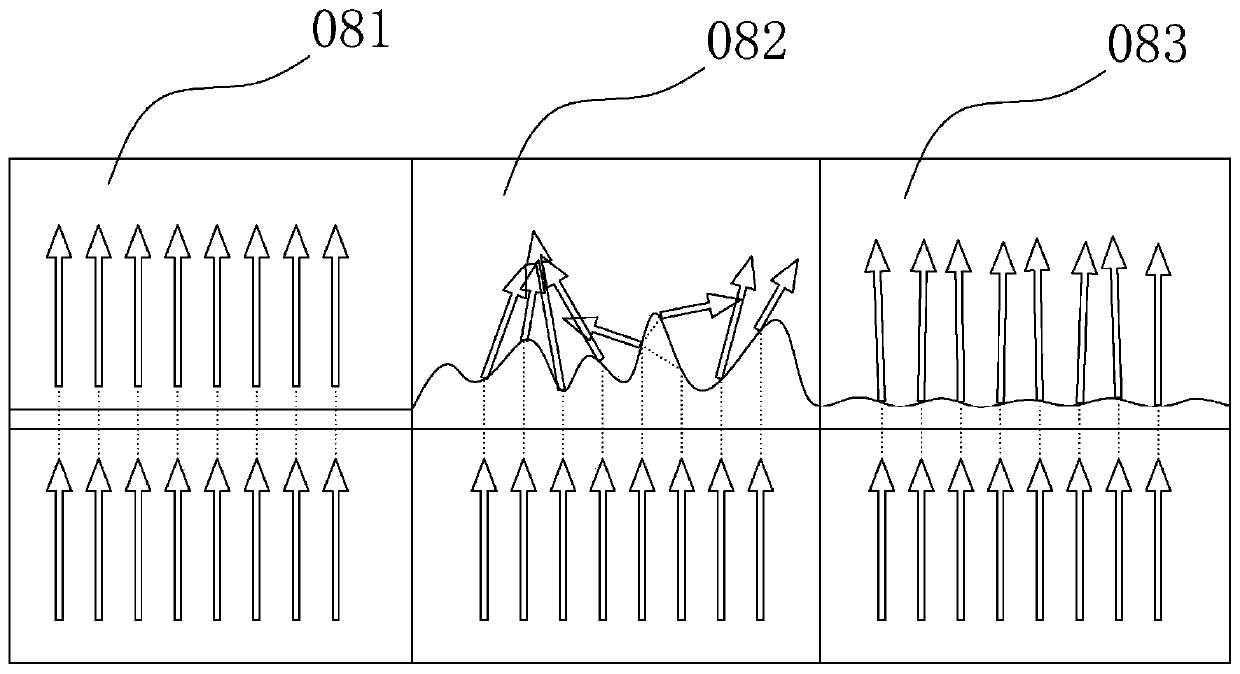Interlayer dimming sheet and preparation method thereof
A kind of interlayer and dimming technology, applied in optics, optical components, instruments, etc., can solve the problem of controlling high-purity body scattered light without emphasizing surface scattering interference, not having scattering controllability, and not aware of high-purity body scattering control mode Advantages and other issues, to achieve the effect of reducing the proportion of stray light, smooth distribution curve, and soft light intensity changes
- Summary
- Abstract
- Description
- Claims
- Application Information
AI Technical Summary
Problems solved by technology
Method used
Image
Examples
Embodiment 1
[0218] Such as Figure 15 As shown, the interlayer dimming sheet provided by the present invention includes a dimming layer 11, a first substrate 10 and a second substrate 20, the dimming layer 11 is placed between the first substrate and the second substrate, the first substrate and the second substrate The thickness H of the second substrate 1 and H 2 Both are 0.05mm, the first substrate includes a light incident surface 1001 and a light exit surface 1002, the second substrate includes a light incident surface 2001 and a light exit surface 2002, the thickness T of the dimming layer is 50 μm, and the dimming layer includes a propagation medium 11A and a light Scattering agent 11B, light-incident surface 1101, light-exit surface 1102, light-scattering agent 11B is uniformly dispersed in propagation medium 11A to form a volume scattering system, input light 01 is emitted from light-emitting surface 00 of the input light source, and passes through the incident light of the firs...
Embodiment 2
[0220] For the interlayer dimmer provided in Example 1, the filling rate D' is 0.2, and the shape of the output light 02 is approximately egg-shaped, such as Figure 11c Shown in curve 083 / triangular as Figure 12c As shown in the middle curve 083, the beam angle Φ 2 =90°.
Embodiment 3-15
[0222] For the sandwich dimming film provided in Example 1, the thickness H of the first base and the second base 1 and H 2 Both are 0.15mm, the roughness Ra of the light incident surface 1001, 2001, light exit surface 1002, 2002 of the substrate is less than 0.05μm, the first substrate and the second substrate are both glass substrates, and the material is silicate glass. Item parameters are listed in Table 3.
[0223] In fact, for the same control method of input light and output light, the combination of the propagation medium and the light scattering agent in the dispersion is not limited to the above-mentioned embodiments, and can be made according to the optical properties (refractive coefficient, extinction coefficient) of the propagation medium and the light scattering agent. Various changes, such as corresponding changes in coating thickness, filling rate, particle size distribution, etc. For the same embodiment, the control combination of input light and output lig...
PUM
| Property | Measurement | Unit |
|---|---|---|
| Surface roughness | aaaaa | aaaaa |
| Thickness | aaaaa | aaaaa |
| Particle size | aaaaa | aaaaa |
Abstract
Description
Claims
Application Information
 Login to View More
Login to View More - R&D
- Intellectual Property
- Life Sciences
- Materials
- Tech Scout
- Unparalleled Data Quality
- Higher Quality Content
- 60% Fewer Hallucinations
Browse by: Latest US Patents, China's latest patents, Technical Efficacy Thesaurus, Application Domain, Technology Topic, Popular Technical Reports.
© 2025 PatSnap. All rights reserved.Legal|Privacy policy|Modern Slavery Act Transparency Statement|Sitemap|About US| Contact US: help@patsnap.com



